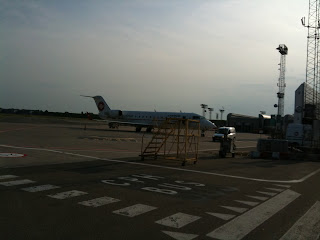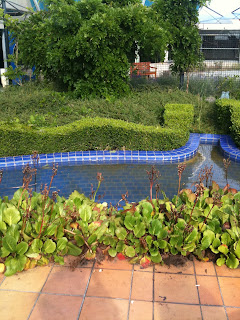Munich Franz Josef Strauss Airport is located 28.5 km northeast of Munich, Germany, and is a hub for Lufthansa and Star Alliance partner airlines. It lies in direct proximity to the old city of Freising and is named in memory of politician Franz Josef Strauss. The airport is located on the territory of three different municipalities: Oberding, Hallbergmoos and Marzling. Between 1995 and 2006 passenger numbers doubled from under 15 million per annum to over 30 million, despite the impact of ‘9/11’ in 2001 and 2002. In 1996 it overtook Düsseldorf as Germany’s second busiest airport and now handles almost twice as many passengers as the country’s third busiest airport and is Lufthansa’s second base in Germany after Frankfurt.
Munich Airport is the second busiest airport in Germany in terms of passenger traffic, behind Frankfurt Airport while it is the world's 14th busiest airport in terms of international passenger traffic. In 2009 it was named the second Best Airport in Europe and fifth-best in the world.

The airport started to operate on 17th of May 1992, when operations moved from the former site at Munich-Riem, which was closed down shortly before midnight on the day before. When its construction was started in 1980 a village named Franzheim had to be demolished, its 500 inhabitants having been resettled in other places in the area. The airport was named after Franz Josef Strauß, who played an important role in German politics. Among other Strauß was a long-time First Minister (Governor) of Bavaria (the state where the airport is located). Under his government, the airport was planned. Strauß, having been a private pilot himself, was said to have a particular interest in the aviation industry and infrastructure. Naming the airport by its full name is quite uncommon, even the airport authority is only named "Flughafen München Gesellschaft". In the Munich area, most people prefer the term "Flughafen München" (Munich Airport), sometimes "Flughafen München II" or simply MUC. The company operating the airport brands it as "M - Flughafen München".

Most of the airport's facilities are located in the area between the two runways. The approach road and railway divide the west part into a southern half, which contains cargo and maintenance facilities, and a northern half, which contains mostly administrative buildings, a holiday long-term parking lot and the Visitors' Centre. It is followed by the west apron and Terminal 1, then the Munich Airport Center (MAC), Terminal 2 and the east apron.
The Munich Airport Centre (MAC) is a shopping, business and recreation area that connects the two terminals. The older Central Area (Zentralbereich), which was originally built as part of Terminal 1, hosts an underground shopping mall and the S-Bahn station. The newer MAC Forum built with Terminal 2 is a large outdoor area with a tent-like, partly transparent roof. Next to it is the airport hotel managed by Kempinski.
The airport authorities have set out to cater for visitors and sight-seers by creating a 'Visitors Park' which includes a 'Visitors Hill' from which a good view can be obtained of the westerly aircraft apron and Terminal 1. This is served by a railway station named 'Besucherpark'. There are three historic aircraft on display in the park, a Super Constellation, a Douglas DC-3 and a Junkers Ju 52/3m. There is also a visitors viewing terrace on the roof of Terminal 2 that gives a view of the easterly aircraft apron.

Munich Airport is connected to the city by Munich suburban railway lines S1 and S8. The ride takes approximately 45 minutes. Bus lines connect the airport to the nearby city of Freising as well as Erding and Markt Schwaben. Lufthansa Airport Bus provides an alternative to the S-Bahn, stopping at Nordfriedhof subway station and Munich Central Station. Munich Airport is accessible via nearby Motorway A 92, which connects to Motorway A 9 and Munich's ring motorway A 99, Bavarian State Road St. 2584 connects A 92's exit 6 (Flughafen München) - an incomplete interchange that can only be used by traffic to and from the west - to the terminals. Access from the east is possible via exit 8 (Freising Ost) and Bavarian State Road St. 2580, which connects to St. 2584 in the east of the airport. More informations about Munich
here




















































